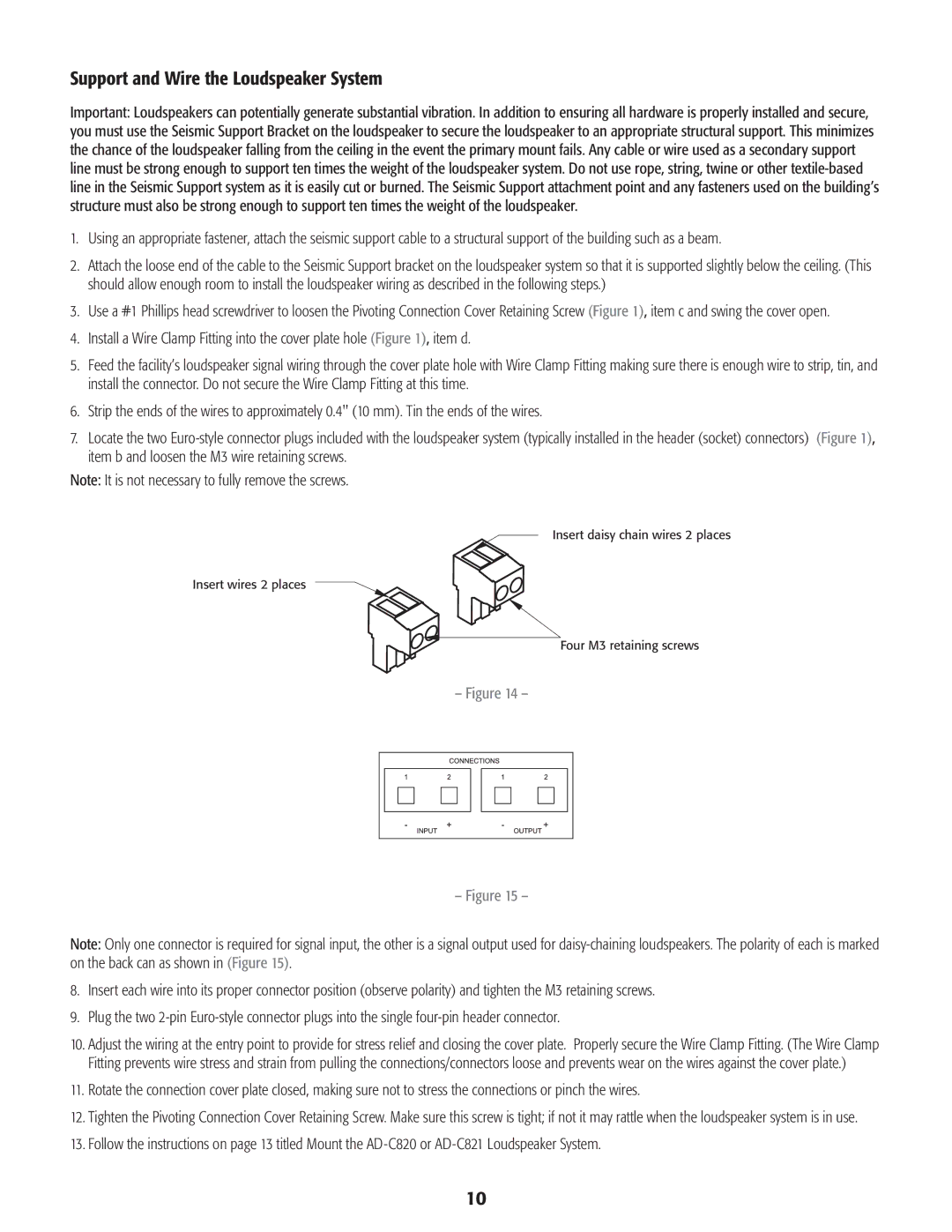AD-C1200, AD-C821, AD-C820 specifications
QSC Audio has established itself as a leader in professional audio solutions, and the AD-C820, AD-C821, and AD-C1200 speakers are prime examples of the company's innovative engineering and commitment to quality. These models are designed specifically for high-performance commercial sound applications, such as restaurants, retail spaces, and corporate environments.The AD-C820 and AD-C821 are part of QSC's AcousticDesign Series, featuring a compact, sleek design that blends seamlessly into any architectural environment. Both models utilize QSC's proprietary Directivity Matched Waveguide technology. This ensures consistent coverage across the listening area, reducing the possibility of dead spots and enhancing audio clarity. The AD-C820 is an 8-inch two-way speaker, while the AD-C821 is a more powerful 8-inch loudspeaker that includes a coaxial design, offering an exceptional audio experience with a wider frequency response and improved tonal balance.
Both speakers are equipped with a unique DMT (Directivity Matched Transition) system, which provides seamless transition between high and low frequencies, significantly improving sound quality during a range of applications. Furthermore, the AD-C821 features a dedicated high-frequency driver that allows for extended high-frequency performance, making it suitable for environments that require more detailed sound reproduction.
On the other hand, the AD-C1200 is a powerful 12-inch ceiling loudspeaker that is perfect for larger spaces. It incorporates a high-output woofer, providing warm and rich bass response. With QSC's specially designed high-frequency driver, the AD-C1200 delivers a clear and detailed audio experience, ensuring that voices and instruments are rendered with precision.
All three models feature an innovative Waveguide design that enhances coverage patterns, ensuring a uniform sound experience regardless of the listener's location. Additionally, these loudspeakers come with a robust enclosure that minimizes ambient noise interference, further enhancing audio fidelity. The integration of rugged components ensures long-lasting performance under various conditions, making them ideal for diverse commercial applications.
In summary, the QSC Audio AD-C820, AD-C821, and AD-C1200 speakers offer a blend of advanced technology, exceptional sound quality, and practical design. Their versatility makes them an excellent choice for anyone looking to achieve high-quality audio in commercial environments, making QSC a trusted name in the professional audio industry.

